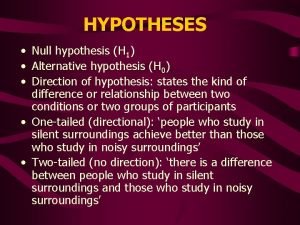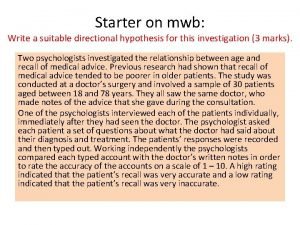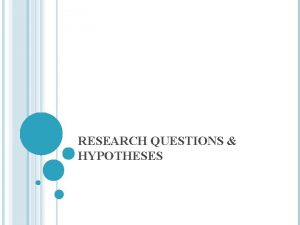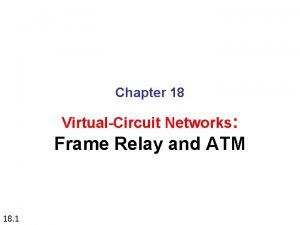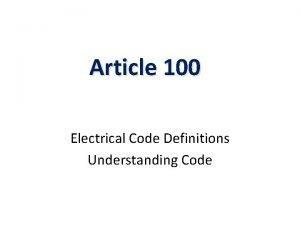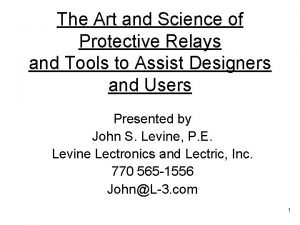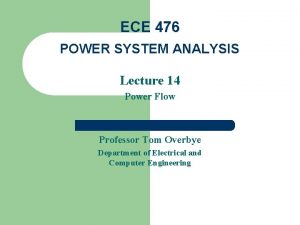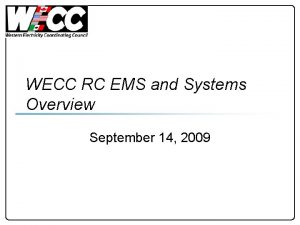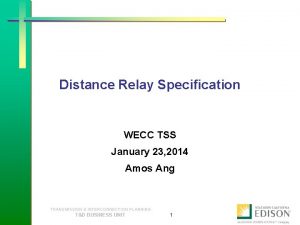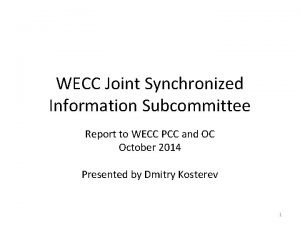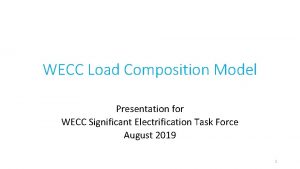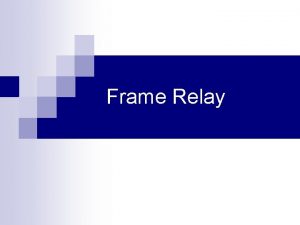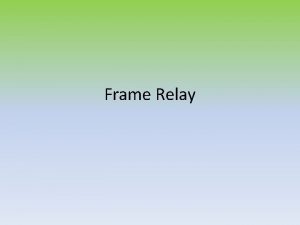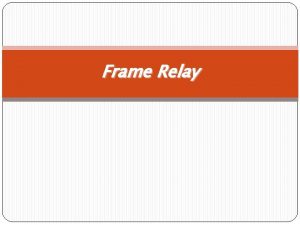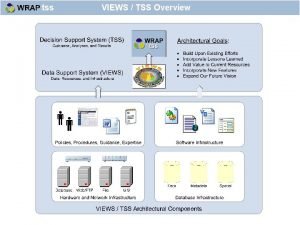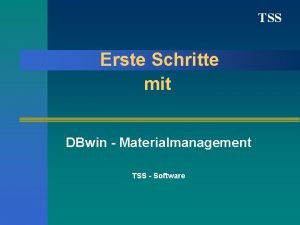Directional Overcurrent Relay Specification WECC TSS January 23











- Slides: 11

Directional Overcurrent Relay Specification WECC TSS January 23, 2013 Amos Ang TRANSMISSION & INTERCONNECTION PLANNING T&D BUSINESS UNIT 1

Agenda § Purpose § Background § Relay Model Specification § Next Steps TRANSMISSION & INTERCONNECTION PLANNING T&D BUSINESS UNIT 2

Purpose § To get approval from TSS for model specification § To model relay behavior in powerflow and transient stability analysis § To model interactions between RAS / SPS and Protection relays § To facilitate transfer of information from System Protection to Transmission Planner § To satisfy the new TPL standards of modeling the actions of protection relays for compliance TRANSMISSION & INTERCONNECTION PLANNING T&D BUSINESS UNIT 3

Background § Non-directional overcurrent relays were approved in a previous TSS meeting § M&VWG approved the specifications in December 2013 § Increasing the functionality of the models that we have, then we can model the functions of these relays more precisely TRANSMISSION & INTERCONNECTION PLANNING T&D BUSINESS UNIT 4

Relay Model Specification § Directional Sub-Model § Load Encroachment Sub-Model TRANSMISSION & INTERCONNECTION PLANNING T&D BUSINESS UNIT 5

Directional Element Sub-Model § The directional element is defined by its characteristic angle shown in the figure TRANSMISSION & INTERCONNECTION PLANNING T&D BUSINESS UNIT 6

Consideration for Electro-Mechanical Relays § Electro-mechanical relays do not have a setting to enter a characteristic angle § The way to translate the settings to the characteristic angle – Determine the angle between voltage and current at unity power factor for the relay connection used – Determine the angle that the current must shift to achieve maximum torque, normally this angle will be lagging the unity power factor – The angular shift in a lagging direction from unity power factor to maximum torque is the characteristic angle or angle of maximum torque on the R-X diagram TRANSMISSION & INTERCONNECTION PLANNING T&D BUSINESS UNIT 7

Load Encroachment Sub-Model § Function is to prevent relay from operating when load current comes into the detection zone TRANSMISSION & INTERCONNECTION PLANNING T&D BUSINESS UNIT 8

Modification to Existing Overcurrent Relay Models § To implement the directionality and/or load encroachment functionality to the existing overcurrent relays – Add the function of torque control which activates the overcurrent relay’s tripping function including the timer function after the direction and load encroachment have been evaluated TRANSMISSION & INTERCONNECTION PLANNING T&D BUSINESS UNIT 9

Next Steps § Phase 2 – Modeling in the unbalanced phase environment TRANSMISSION & INTERCONNECTION PLANNING T&D BUSINESS UNIT 10

Any Questions? TRANSMISSION & INTERCONNECTION PLANNING T&D BUSINESS UNIT 11
 Directional and non directional hypothesis
Directional and non directional hypothesis Directional vs non directional hypothesis
Directional vs non directional hypothesis Directional and non directional hypothesis
Directional and non directional hypothesis Directional and non directional hypothesis
Directional and non directional hypothesis What is directional and non directional hypothesis
What is directional and non directional hypothesis Directional hypothesis
Directional hypothesis General problem in research example
General problem in research example Mpls vs atm vs frame relay
Mpls vs atm vs frame relay Readily accessible vs accessible
Readily accessible vs accessible Overcurrent protection
Overcurrent protection Wecc balancing authority map
Wecc balancing authority map Ems cortal
Ems cortal


